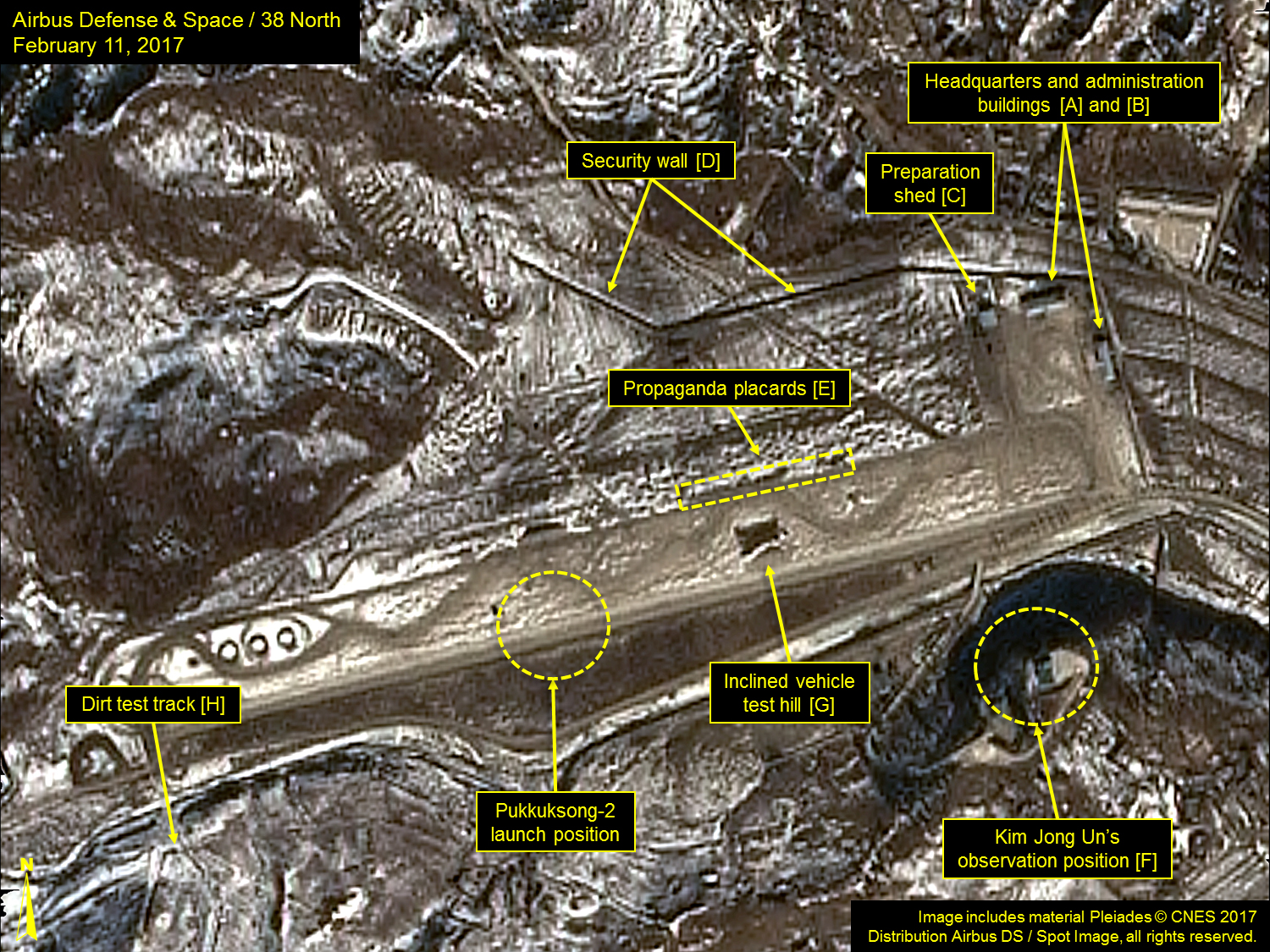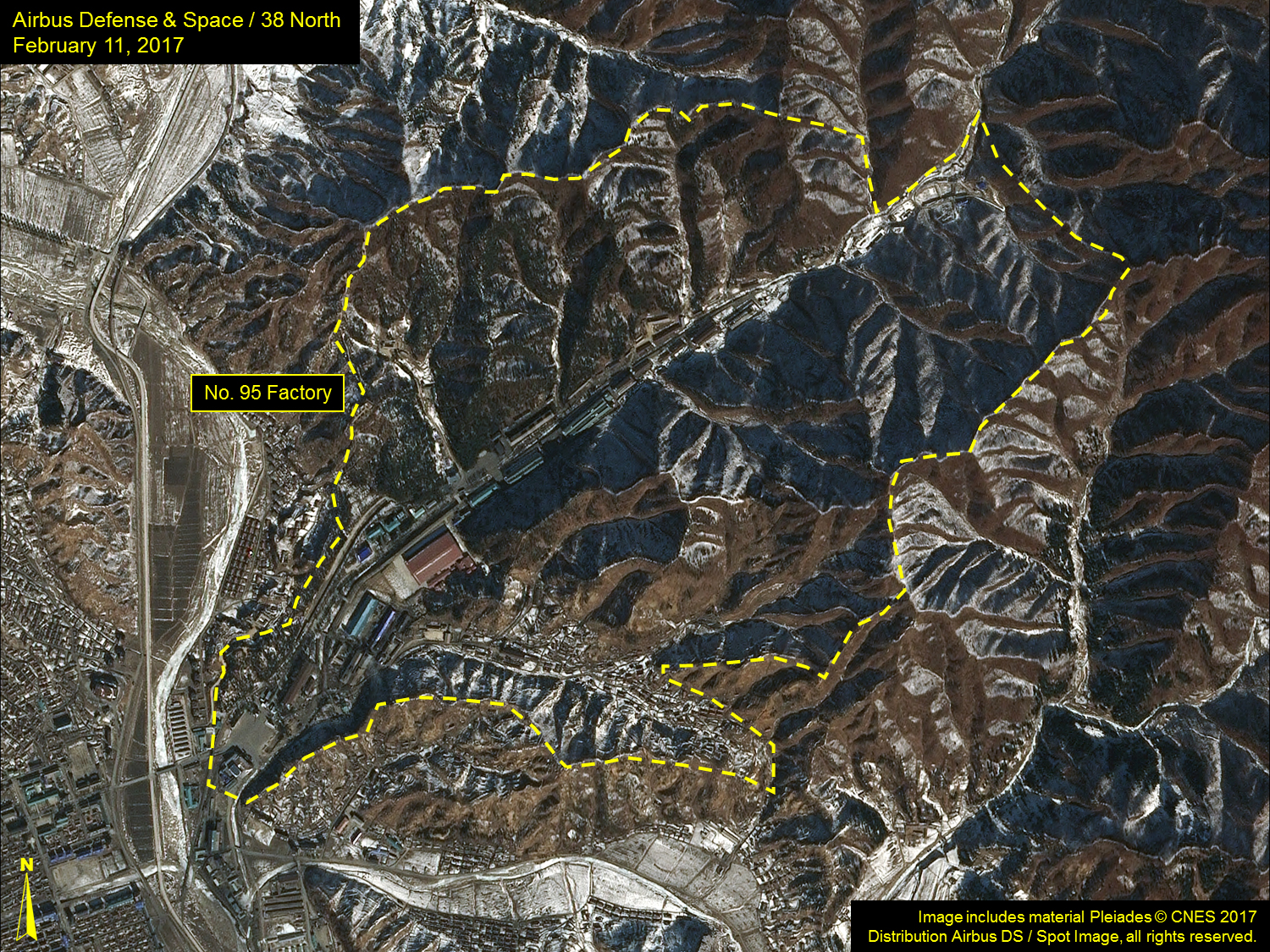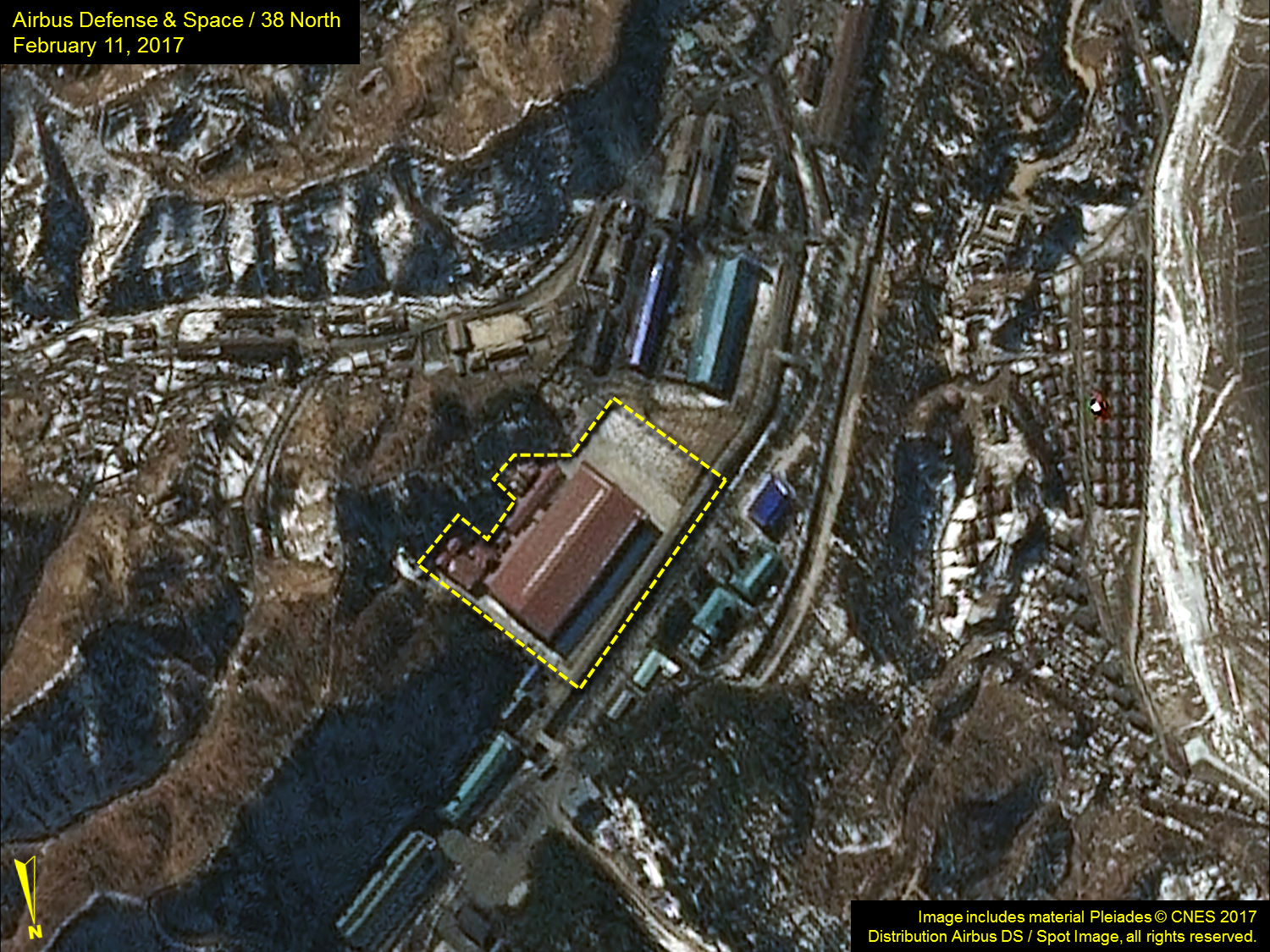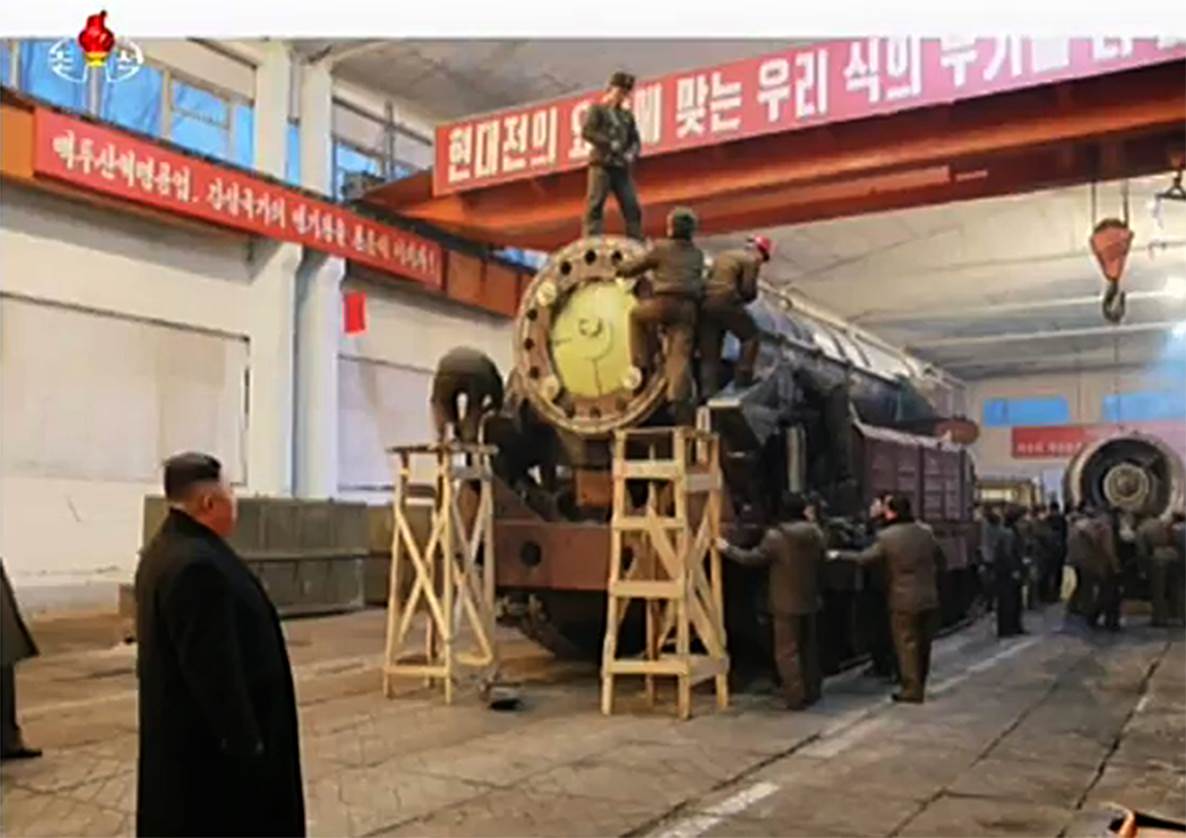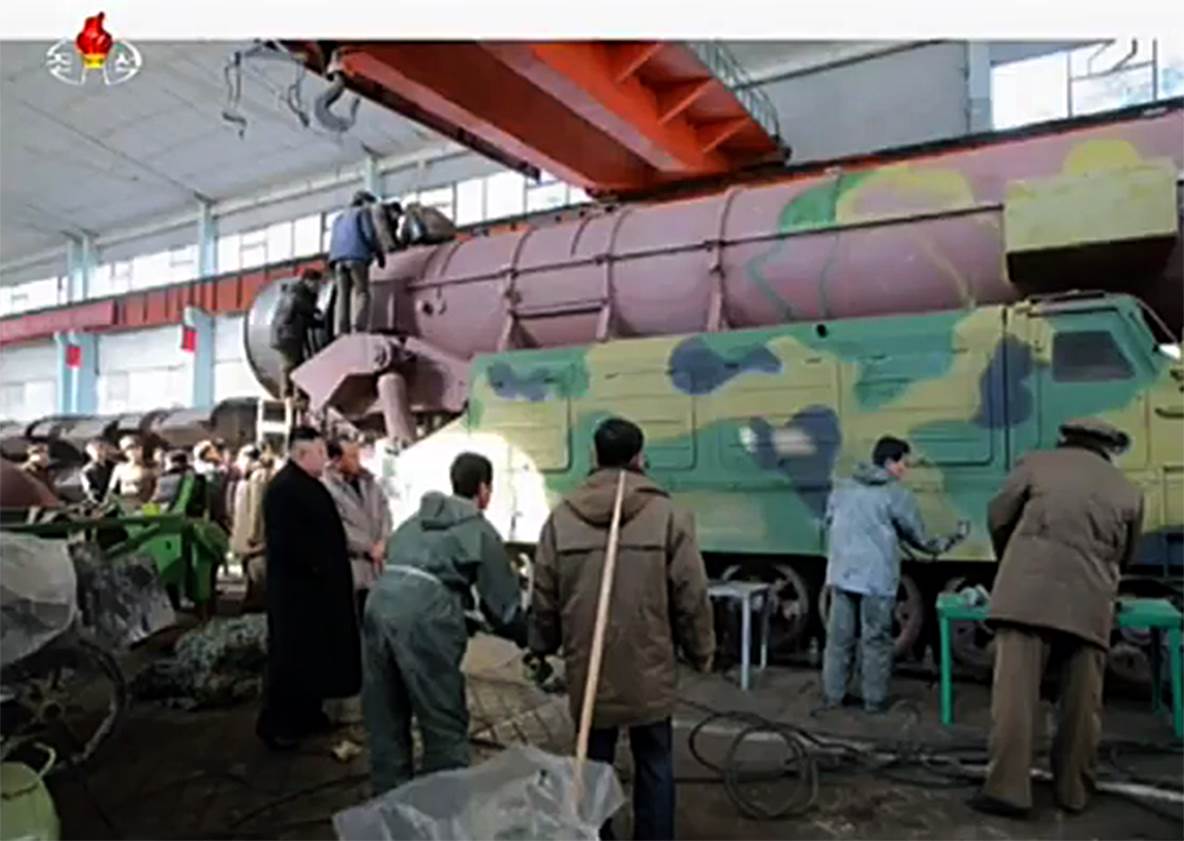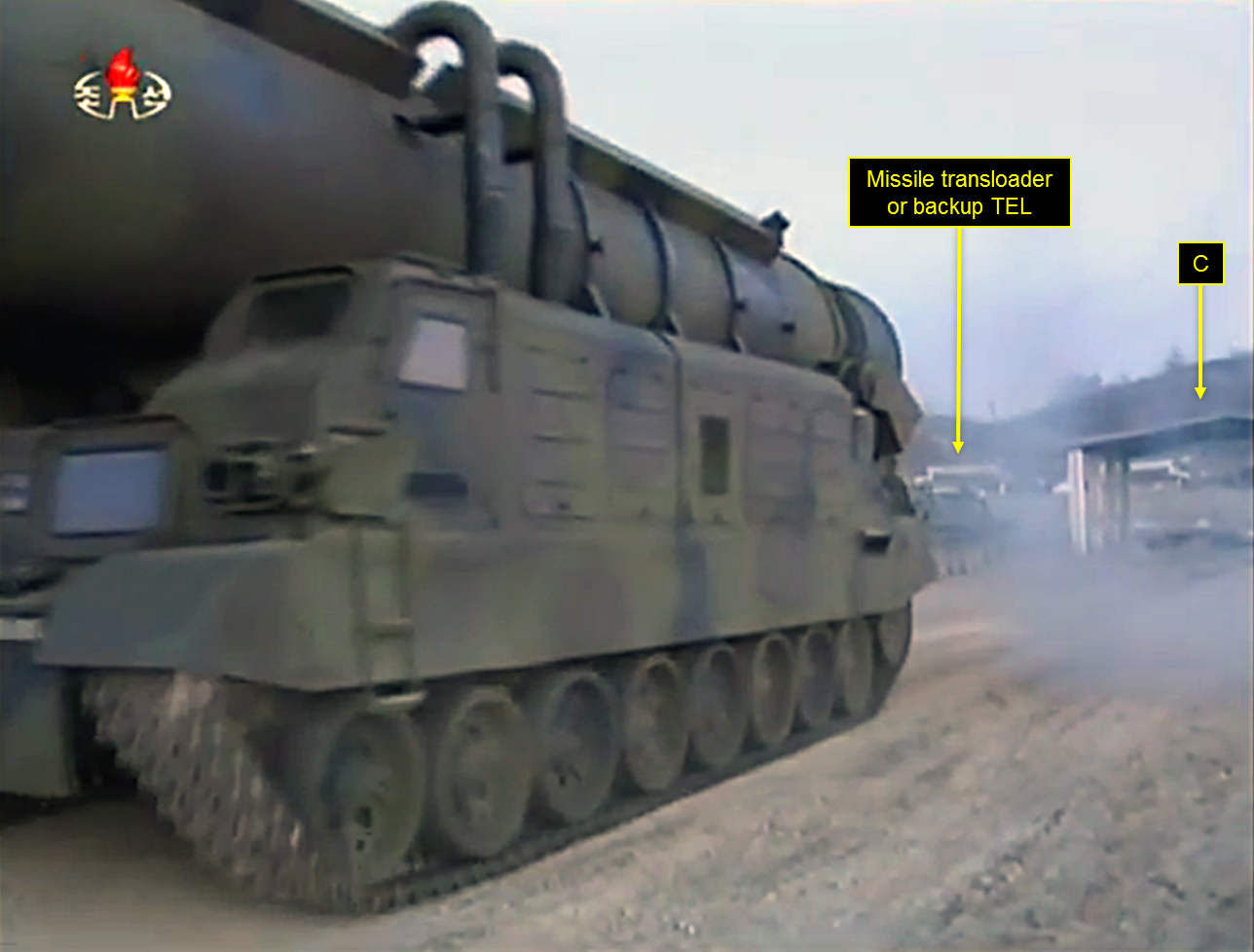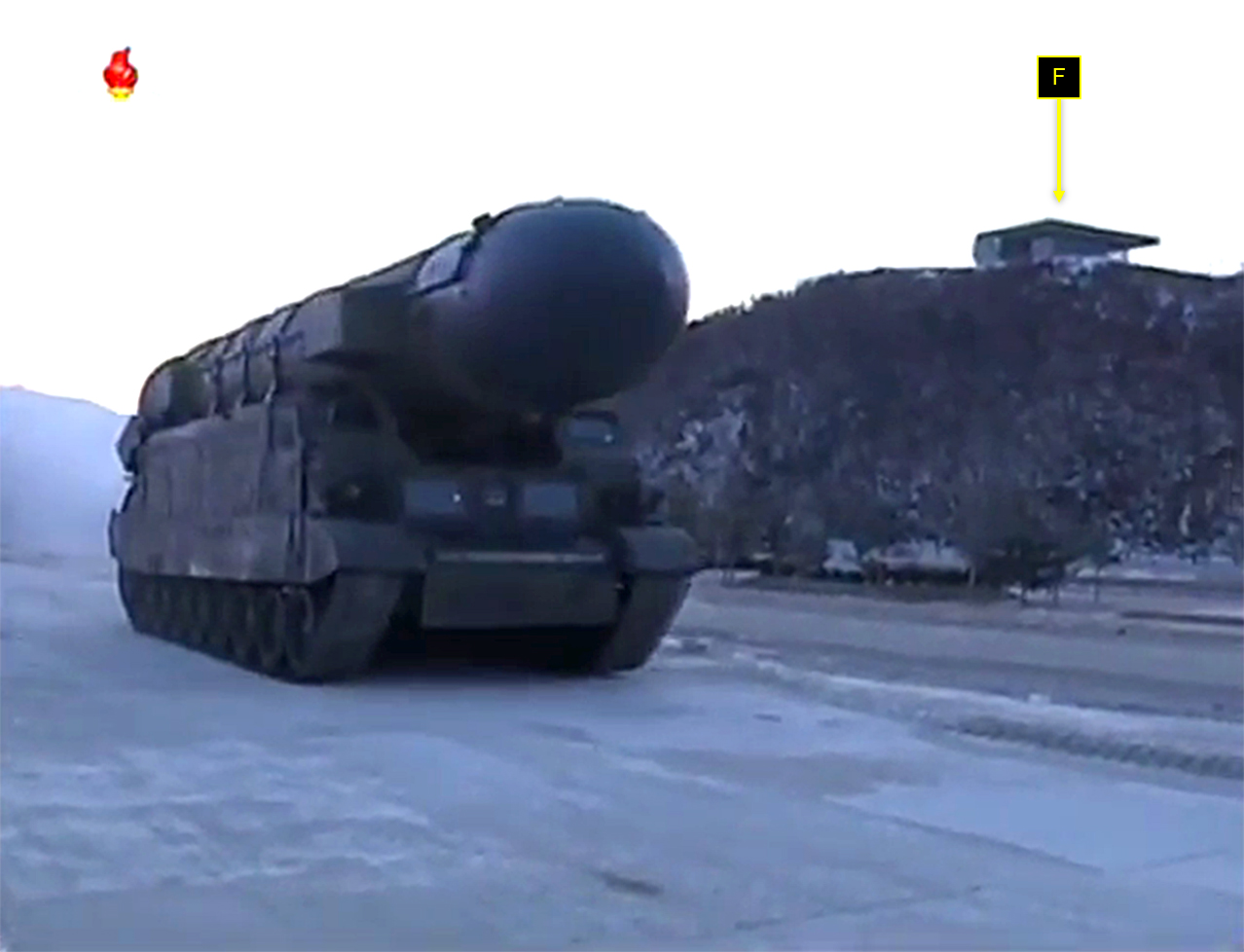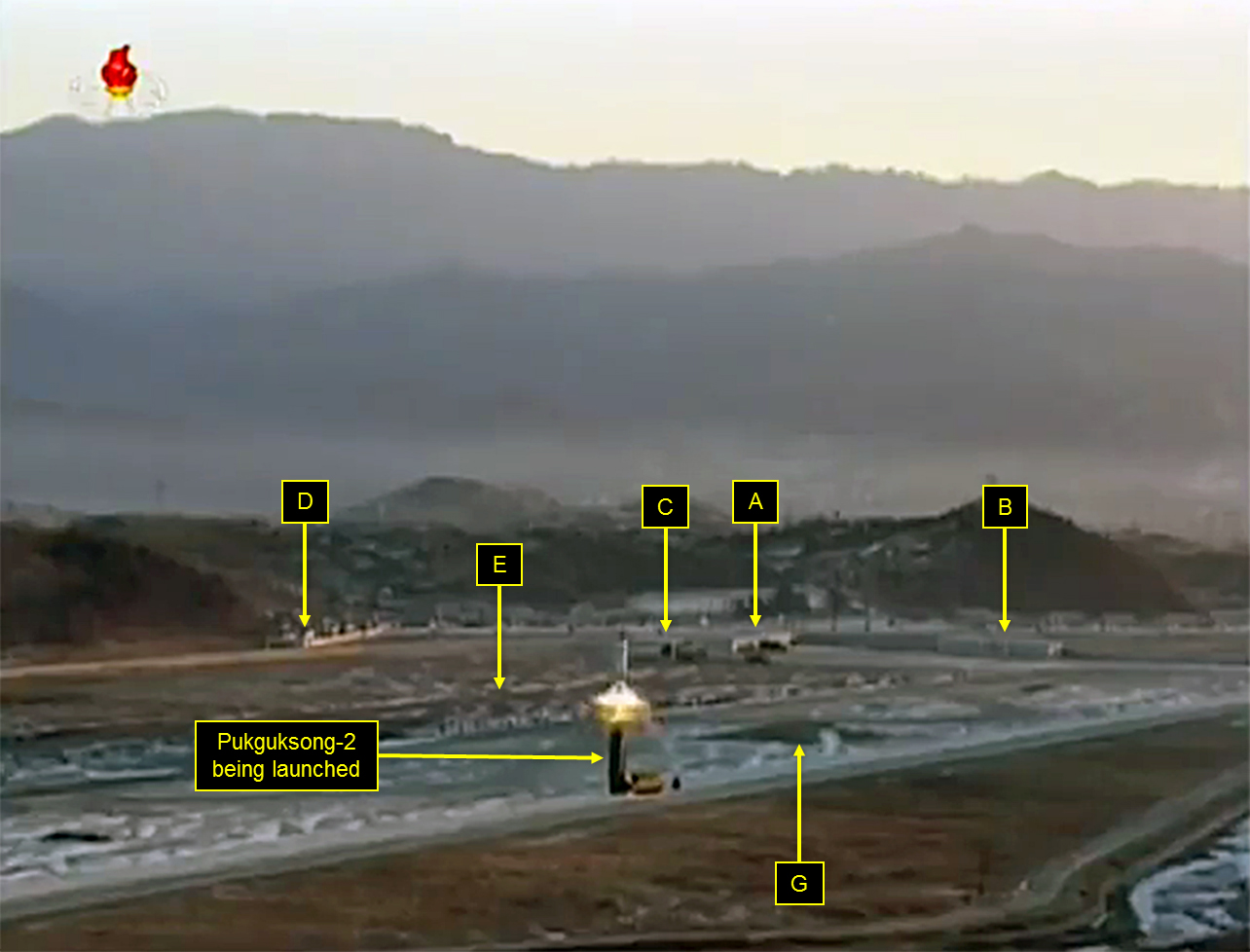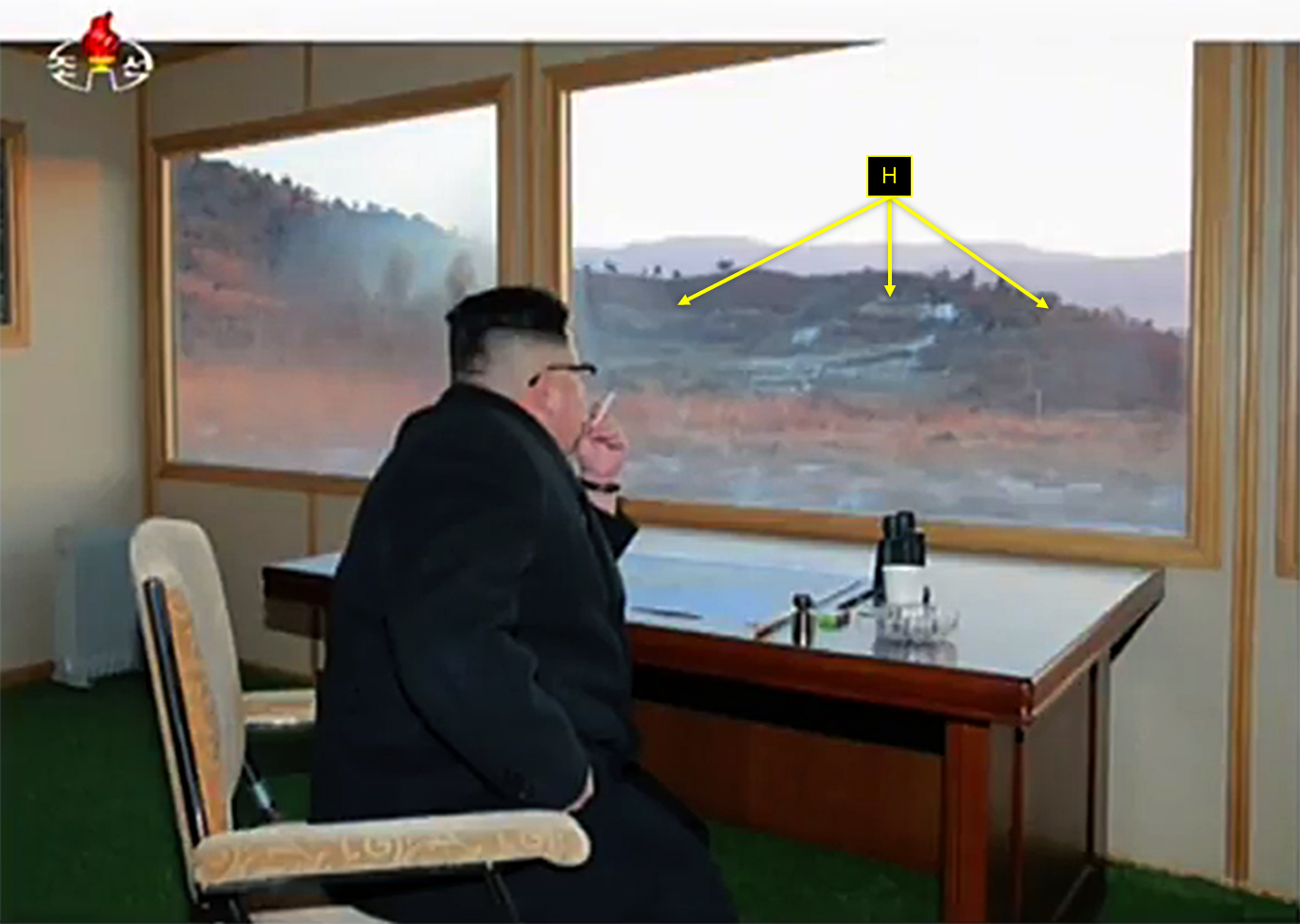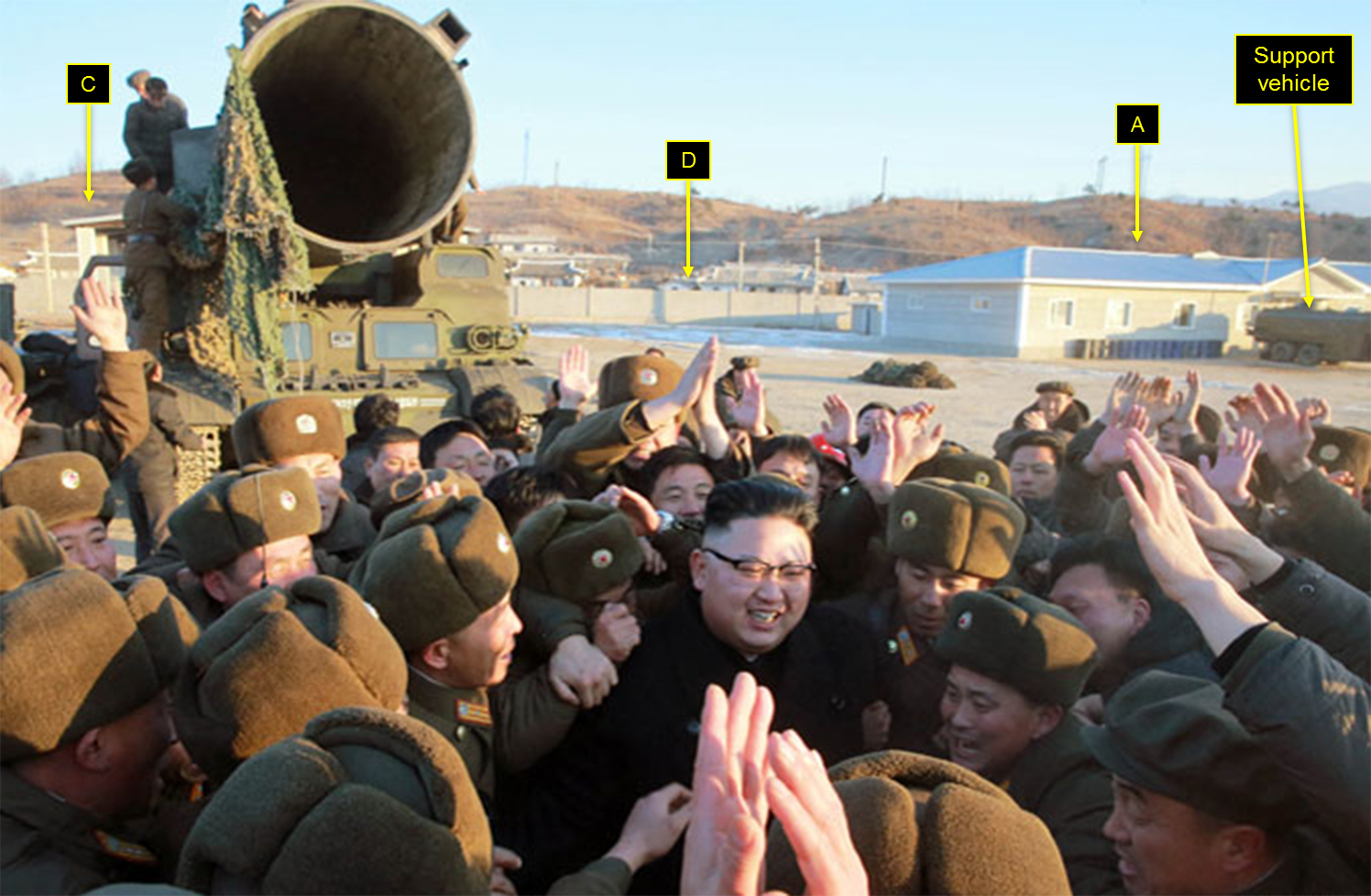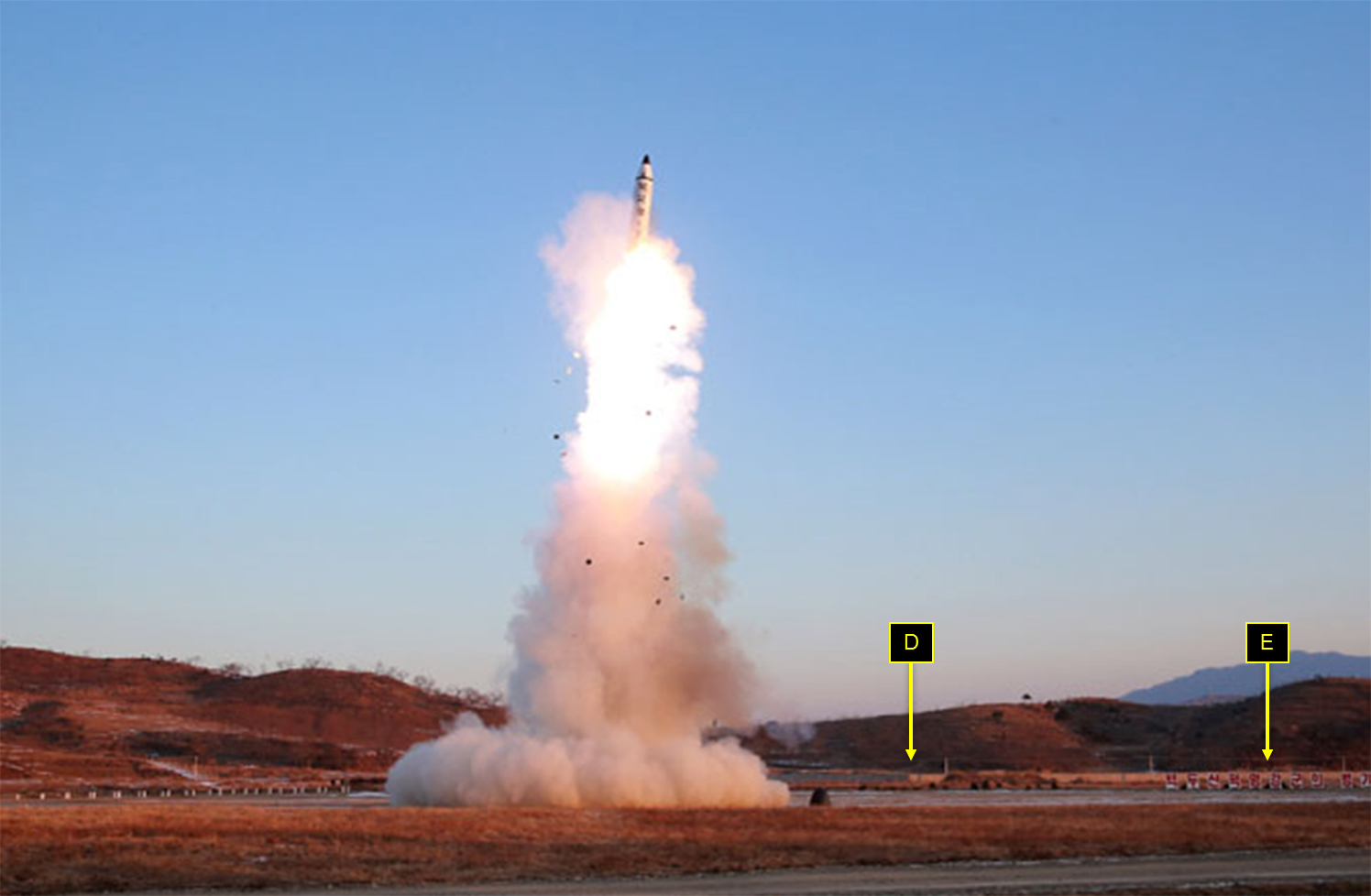
Finding the Real Site for the Pukguksong-2 Launch
On Sunday, February 12, 2017, North Korea conducted the first test launch of its “Pukguksong-2, solid-fuel missile,” a land-based version of the KN-11 Pukguksong-1 submarine-launched ballistic missile (SLBM), but not from the facility that almost all media sources have reported. [1] The development of the Pukguksong-2 was not unexpected and the system successfully flew a lofted trajectory, reaching an estimated altitude of 575 km and flying approximately 500 km before falling into the East Sea (Sea of Japan). [2]
Almost all initial reporting indicated that the missile was launched from the Panghyon Airbase in North Pyongan Province, located in the northwest. When, however, North Korea released still and video imagery of the test it was clear to North Korea watchers that the test was not conducted from the Panghyon Airbase, but from the Iha-ri Vehicle Testing and Driver Training Facility approximately 9.5 km to the north-northeast. [3] The choice of the Iha-ri facility was undoubtedly due to its proximity (only 5 km) to the No. 95 Factory (Kusong Tank Factory) where it is believed the transporter-erector-launcher (TEL) and its support vehicles were designed and manufactured. [4] It is likely that the Pukguksong-2 pre-test imagery released by North Korea was taken here.
For the test launch the Pukguksong-2 TEL, a probable backup TEL, a tracked missile transloader—a vehicle that transports and loads a missile onto a TEL, and support vehicles were brought to the facility and the TEL was placed under the preparation pavilion for final pre-launch checkout. When completed, the TEL moved onto the facility’s main paved obstacle course to a position at its center. From here the Pukguksong-2 was launched at approximately 07:55 a.m. (local time).
While the Iha-ri Vehicle Testing and Driver Training Facility had been used for informal vehicle testing, driver training and military exercises since the early 2000s, its formal role began in about 2009 when several dirt tracks were constructed. Construction of a comprehensive all-weather facility was undertaken in 2014. Since that time, it has been used to test new vehicles (including the new Pukguksong-2 TEL and its support vehicles), train vehicle drivers and several other missions.
- [1]
Pukguksong-2 = North Star 2.
- [2]
Given the flight characteristics of this test it suggests that, when flown using a standard trajectory, the Pukguksong-2 would have a range of 1,200-1,300 km assuming the same warhead weight. This would classify the system as a medium-range ballistic missile (MRBM)—the same class as the Nodong missile.
- [3]
Although the national designator for the facility is unknown it is currently identified as the Iha-ri Vehicle Testing and Driver Training Facility.
- [4]
This factory is sometimes known as the Samjiyon Precision Machine Factory.

